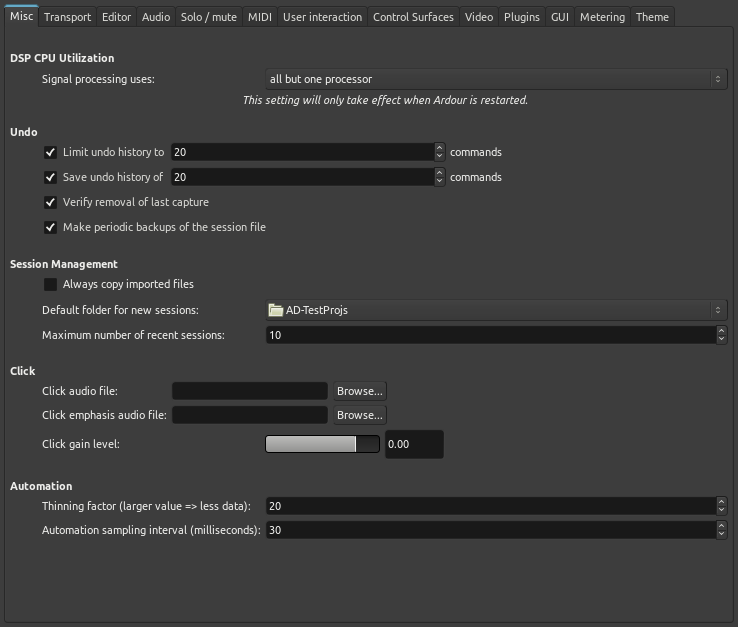
Global Misc Tab
This tab contains settings that do not belong on the other tabs.

-
DSP CPU Utilization sets how many cpu processors can be used to do signal processing. It can be set to use one up to all processors.
-
Undo
-
Limit undo history sets how many commands can be undone using Z or Edit > Undo.
-
Save undo history sets how many commands are saved so they are available to be undone after reopening the session.
-
Verify removal of last capture when enabled prompts to verify removal the last recording capture when Edit > Remove Last Capture is executed.
-
Make periodic backups of the session file will create a backup session file after changes to the timeline. The backup file is the session name followed by .ardour.bak. The backup can be used to recover from crashes when the session had not been explicitly saved.
-
-
Session Management
-
Always copy imported files selects, and then disables changes to, the Copy files to session option in the Add Existing Media dialog.
-
Default folder for new sessions: defalts the folder where Ardour will create new session folders. This is used in the Session Setup dialog displayed by Session > New.
-
Maximum number of recent sessions: determines how many of the last opened sessions shows in the Recent Sessions dialog displayed by Session > Recent.
-
-
Click
-
Click audio file: sets a user defined sound to be played when Ardour's metronome is enabled in the Transport Bar
-
Click emphasis audio file: sets an optional different metronome sound to be played on the downbeat.
-
Click gain level: allows the metronome's click sounds to be boosted or attenuated.
-
-
Automation
-
Thinning factor ranges from 0 to 1000 with larger values sending fewer automation changes. Thinning is like lossy audio compression, removing data that is less likely to be noticed, although the more you remove the more likely the loss will be noticed. The advantage to thinning is reduced CPU usage.
-
Automation sampling interval ranges from 1 to 1000 ms. Determines how frequently the automation input is sampled. The shorter the interval the higher the accuracy but also the higher the CPU requirements.
-
